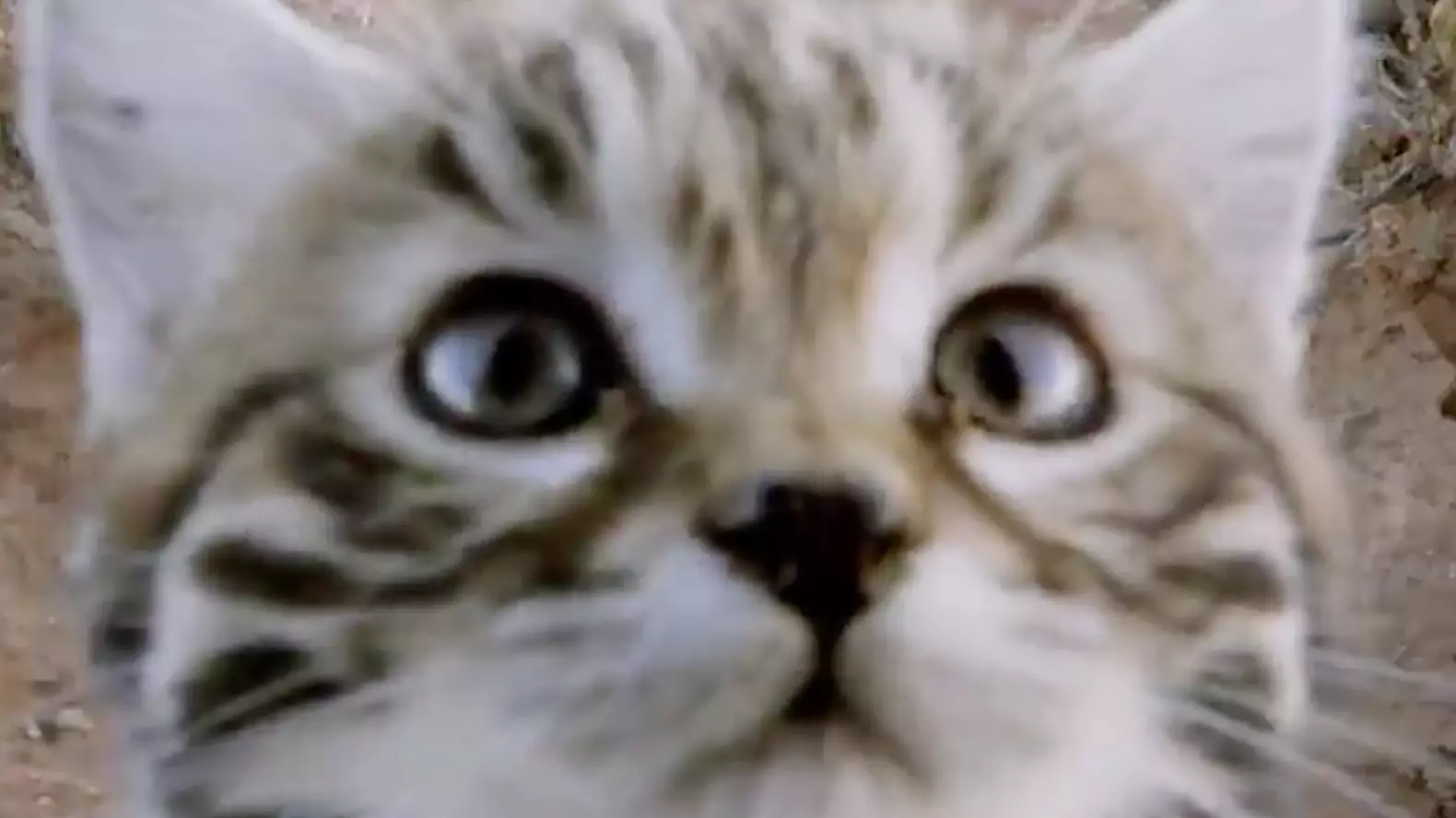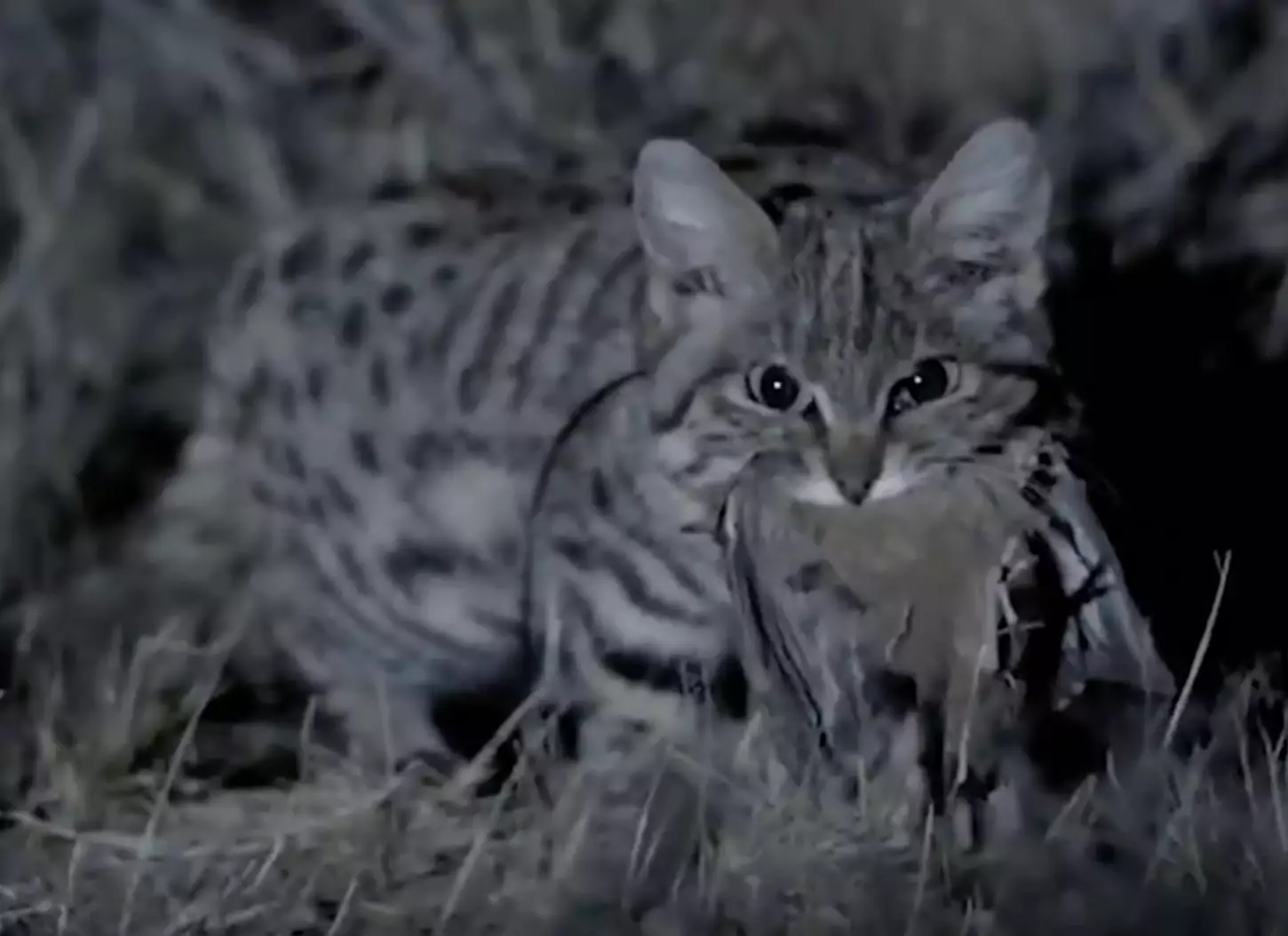
When you hear the words 'world's deadliest cat', what do they bring to mind A lion? A tiger? Maybe a cheetah? Whatever image your brain conjures up, it almost certainly isn't this...
Credit: BBC
Advert
Meet Gyra, an African Black-footed-cat and quite possibly the cutest deadly predator you've ever laid eyes on.
The film crew for BBC's Big Cats documentary series came across the mum and her kittens while filming in the Karoo desert in southern Africa and immediately fell in love with her.
However, she wasn't easy to find. Black-footed-cats only measure around 35cm in length and spend a lot of their time in underground lairs.

After much time spent hunting, the crew's only hope was a scientific team that had successfully radio-collared one dark pawed feline. Thankfully, the collar led them straight to Gyra.
"The problem was, the scientist's truck was a big but delicate piece of equipment and they weren't keen on us fixing or modifying it," Paul Williams, a producer director on the series explained to Wired.
"These cats can travel 20 miles per night, they're constantly on the go. So, whenever we spotted Gyra we'd slow the truck down, lower the camera and tripod land quickly try and get shots. This was a very slowly pieced together portrait."

Gyra may be small but she packs a serious punch. Black-footed cats are out hunting every night and of all their attempts at catching prey, a massive 60 percent are successful, making them the most efficient killers in the feline kingdom.
As well as Gyra, Big Cats follows a number of other wild felines, including a similarly small rusty-spotted cat and some cheetahs, which, understandably, weren't particularly easy to film.
"The problem with filming cheetahs is fairly obvious," explains Nick Easton, producer director on the wildlife series.
"They're the fastest land animals, so you can't follow them running on foot, and they're quite slender and nimble so driving alongside in a truck is too dangerous. In the end, we hacked some new technology, managed to capture a cheetah at full stretch in slow motion and saw things no-one has ever filmed before."
The series aims to uncover the never-seen-before secrets of the world's big cats, bringing them to screens via the latest filming technology. If you've been suffering withdrawal from Blue Planet II, this may be just what you need.
Catch the first episode on BBC iPlayer now, with episode two landing tomorrow (Thursday) at 8pm on BBC One.
Featured Image Credit: BBCTopics: TV and Film, BBC, Animals